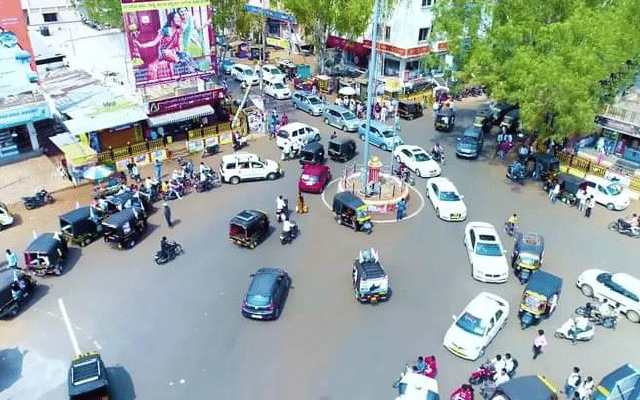The history of Bagalakote District deals with the golden rule of Chalukyas. There are many archaeological remains that were constructed during the rule of Chalukyas and Rashtrakutas.
The rulers of the Chalukya Dynasty once upon a time ruled the Bagalakote District, in Northern Karnataka. The Bagalakote District covers a distance of 6593 sqkms. Bagalakote District is flanked by Vijayapura District in the North and Gadag District in the southern part. While the Chalukyas also covered the Raichur District, it lies towards the East of Bagalakote District and Koppal District towards the Southeast along with Belagavi District towards West border the same.
In Bagalakote District the Archaeological Department has discovered the middle Palaeolithic localities in the Kalagdi basin of the District. The discovery of settlements in the Village of Lakhamapura near the Malaprabha River Valley yielded the identification of quartzitic artefacts such as handaxes and cleavers. It proved that there was a prehistoric settlement in this area.
A pre-Chalukyan brick temple was discovered at the foothills of Bachinagudda, in Pattadakal, where an idol depicting the bust of Chaturmukha Lord Shiva was discovered. Evidence of Megalithic habitation was also discovered at the foothills of Bachinagudda, as were Marahathi and Satavahana coins of a later period.
The first documented evidence of the existence of the Bagalakote District dates back to the 2nd century CE, when the Taluks of Badami, Indi and Kalkeri were mentioned in the works of the Greek Astronomer Ptolemy.
In the 6th Century BC, the Hindu Chalukya rulers ruled over much of present South India. The Chalukyan king Pulakeshin I established Bagalakote as his administrative headquarters; the District retained its prominent status until the Chalukyan empire was sacked by the Rashtrakutas in 753 CE. The history of the Bagalakote District can be found in the writings of Hiuen Tsag.
The period of rule of the Chalukyas of Badami, whose kingdom stretched from modern Karnataka to Maharashtra and Gujarat, was a highlight of the history of the Bagalakote District. Chalukya King Pulakeshin II further consolidated the empire by battling with the Kadamba Dynasty, Ganga Dynasty, Maurya Dynasty of the Konkan, Gurjaras and Emperor Harshavardhana, whom he vanquished on the banks of the Narmada river. Accounts of war were inscribed on stone structures in the Town of Aihole, now located in the Taluk of Hungund. The Kalyani Chalukyas, descendants of the Badami Chalukyas, conquered the area before the dawn of the 10th century CE. Their rule was interspersed with wars against the rulers of the Cholas Dynasty and the Hoysala Dynasty.
The Kalyani Chalukyas moved their capital from Badami to Kalyani, in the present-day District of Bidar. Akkadevi, sister of the Kalyani Chalukya Jayasimha II ruled in the area for more than 40 years from 1024 CE. During the course of her rule of the area, then known as Kisukadu, 70 villages from the Bagalakote District were added to her administration.
The Chola king Virarajendra seized the area by defeating Somesvara I at Koodalasangama. By the 11th century BCE, all of Karnataka including Bagalakote fell into the dominion of the Hoysala Empire, first consolidated by Veera Ballala and later subordinated to the Sinda kings.
Medieval History of Bagalakote District
The Yadavas of Deogiri annexed Bagalakote in 1190 AD and ruled until approximately the 13th Century. The Deccan invasion by the Muslim Khilji Dynasty, led by Ala ud din Khilji in 1294 brought an end to the rule of the Yadavas. In the 14th Century, much of this territory was overrun by Muhammad Tughlaq. That the Tughlaqs were undisputed overlords of this territory cannot be established since Harihara, the first king of the Vijayanagara Empire is supposed to have possessed territories as far North as Kaladgi in 1340 and also because a fort was built under permission from Harihara in Badami during that period. In the late 15th century, the Adil Shahi Dynasty founded by Yusuf Adil Shah established an independent state with Viajyapura as its capital.
Modern History of Bagalakote District
It is from this time that Bagalakote’s history is homogeneous to that of Vijayapura. In 1818, after having lost their kingdom to the British East India Company, the Maratha Peshwas of Satara were crowned under the lords of the kingdom.
With the failing of their brief reign which ended in 1948, the District passed into the hands of the British Raj and was incorporated into the dominion of the Bombay Presidency. India gained independence from the British in 1947; thereafter, the States Reorganisation Act of 1956 allowed for the creation of a Mysore State, renamed Karnataka in 1971, and for Vijayapara (and therefore Bagalakote) to be included in its dominion. A separate District of Bagalakote was carved out from the existing Bijapur District in 1997.

















